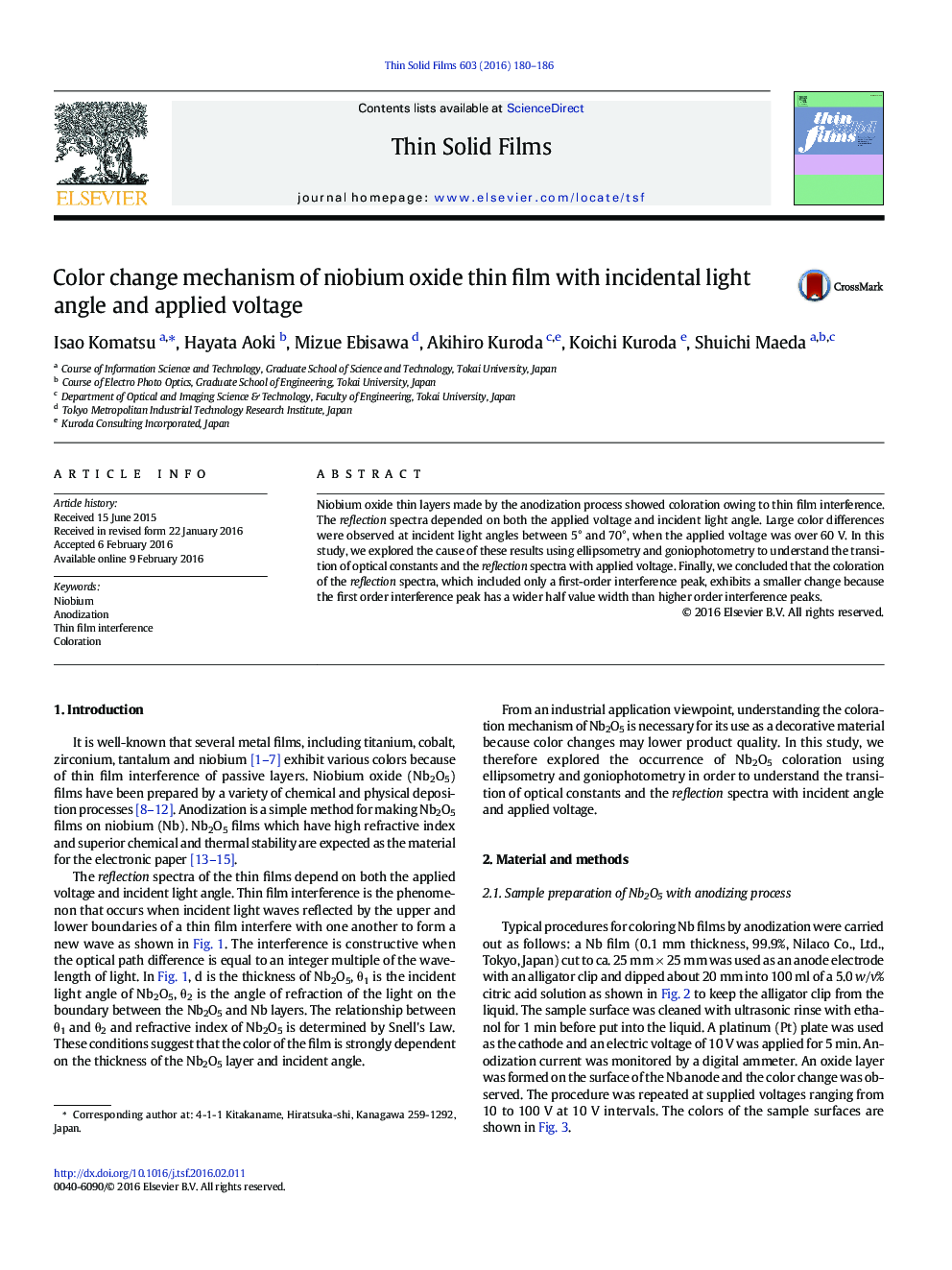| Article ID | Journal | Published Year | Pages | File Type |
|---|---|---|---|---|
| 8033701 | Thin Solid Films | 2016 | 7 Pages |
Abstract
Niobium oxide thin layers made by the anodization process showed coloration owing to thin film interference. The reflection spectra depended on both the applied voltage and incident light angle. Large color differences were observed at incident light angles between 5° and 70°, when the applied voltage was over 60 V. In this study, we explored the cause of these results using ellipsometry and goniophotometry to understand the transition of optical constants and the reflection spectra with applied voltage. Finally, we concluded that the coloration of the reflection spectra, which included only a first-order interference peak, exhibits a smaller change because the first order interference peak has a wider half value width than higher order interference peaks.
Related Topics
Physical Sciences and Engineering
Materials Science
Nanotechnology
Authors
Isao Komatsu, Hayata Aoki, Mizue Ebisawa, Akihiro Kuroda, Koichi Kuroda, Shuichi Maeda,
